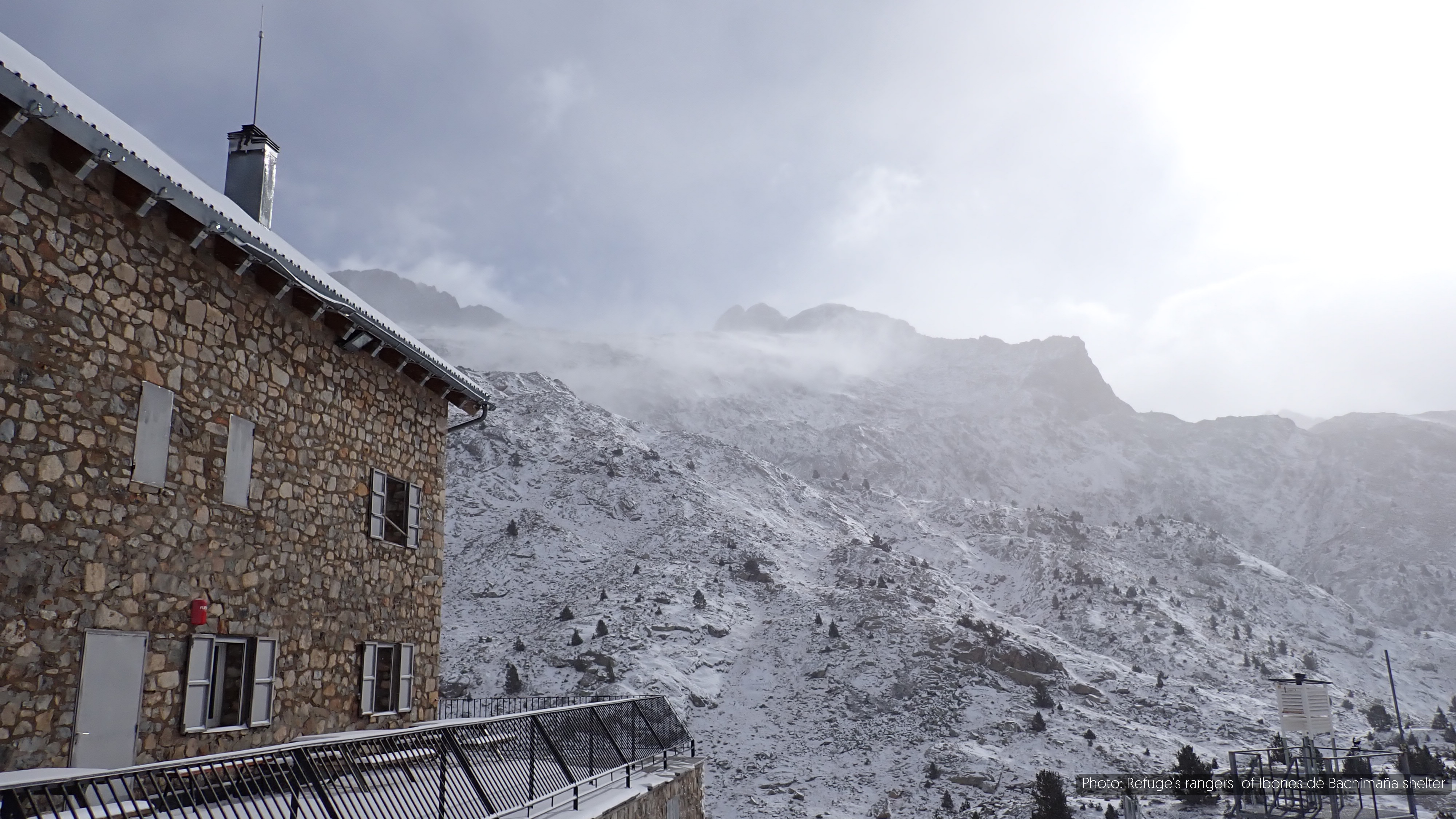My shoes weren’t that bad, but I could feel the water starting to get into my boots, soaking my socks. Worst of all, it wasn't raining, it was snowing. My feet were so cold that, despite having been walking for several hours, I couldn't even feel them anymore. At least the views made it all worthwhile. Between the snow-capped peaks stretched a beautiful lake with water so calm that it reflected its surroundings as if it were a mirror. On one of its banks, a stone house stood announcing the end of the excursion: the Bachimañana Shelter.
Shelters are often located in the middle of nature, where neither the electricity grid nor the roads can reach. One does not expect too many luxuries when arriving at such a place, so I was pleasantly surprised to find that the temperature inside the building was over twenty degrees, the water in the showers was hot and there was noodle soup for dinner.
Interestingly, there was no generator to be heard indicating that they were burning fuel to produce electricity, so they must be getting it some other way. There were no solar panels in sight and no windmills, but a dam was holding back the water from the lake. Could it be that they were getting all the energy they needed from the water?
Mario Martinez, one of the refuge's rangers, settled these doubts:
"The turbine of the dam is the heart of the house and always generates energy, 24 hours a day, 365 days a year. In summer, which is when we need the most energy because the shelter is full, there is enough water. In winter water is scarce but that is also when we need to spend less energy in freezers and refrigerators. That makes the house 100% sustainable."
The construction of the shelter is relatively new and is designed to be well insulated. In addition, they have heat sinks distributed throughout the house that use the excess energy produced by the turbine to heat the shelter and can section off the heating to prevent it from reaching unoccupied rooms.

In the future, they want to continue to focus on sustainability. For example, thanks to funding from the LIFE SustainHuts project, they are implementing a pioneering technology that will allow them to store surplus energy from the turbine in the form of hydrogen. The rationale is very simple:
Hydrogen is a very abundant element in the universe and in its gaseous state has the capacity to produce electricity if combined with oxygen. However, in nature it does not exist free in this form, so it has to be obtained artificially. One possibility is to apply an electric current to separate the hydrogen and oxygen molecules from the water in a reaction called electrolysis. To recover the energy, just use the stored hydrogen and reverse this reaction.
This technology is very environmentally friendly because the only final waste produced is water vapor and the hydrogen is neither toxic nor polluting. At the same time, the energy used for hydrolysis would come from the waterfall of the dam, so it would be totally renewable. The main drawback of this gas is that in contact with oxygen it is highly flammable, so precautions must be taken in this regard.
Currently, the equipment needed to generate and store hydrogen is already installed and is being tested. According to Martinez, the shelter will benefit from this technology:
"When the turbine breaks down is when we have to start burning fuel, which is very expensive, pollutes and also has to be brought in by helicopter. We have batteries, but they provide energy for a limited time. Thanks to hydrogen we will avoid burning fuel when we cannot use the turbine for whatever reason. In turn, the plan is to give hydrogen to other shelters so they can use it too."
Once inside the sleeping bag, feeling cozy and warm, I smiled at the irony, for the water that used to freeze my feet was what now what made my comfort possible.













